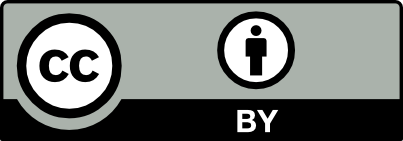Modelo de simulación de un hogar inteligente para la generación de datos sintéticos de sensores
DOI:
https://doi.org/10.18046/syt.v14i39.2350Palabras clave:
Hogar inteligente, sistemas de inteligencia ambiental, sensores, simulación, adultos mayores.Resumen
En el mundo se está verificando un aumento progresivo del porcentaje de personas mayores en la población mundial. Hay una tendencia en los adultos mayores a envejecer en su lugar habitual de residencia, en lugar de utilizar casas de retiro, a pesar de los riesgos y peligros involucrados. Los hogares inteligentes –sistemas de inteligencia ambiental desplegados en las residencias de adultos mayores–, pueden brindar apoyo para compensar el deterioro cognitivo, sensorial o físico de los mismos. La instalación y puesta a punto de hogares inteligentes requiere de conjuntos de datos de sensores que sean representativos de los ambientes que se pretenden monitorear. Existen diversas restricciones y dificultades al momento de evaluar e implementar hogares inteligentes. Se describe un modelo de simulación que permite la obtención de conjuntos de datos sintéticos de sensores para ser utilizados en el desarrollo y entrenamiento de métodos y algoritmos de reconocimiento de actividades, con el fin de identificar automáticamente cambios en las actividades de la vida diaria que sugieran deterioros físicos y/o cognitivos.
Referencias
Brownsell, S., Blackburn, S., & Hawley, M.S. (2008). An evaluation of second and third generation telecare services in older people's housing. J. Telemed Telecare, 14 (1), 8-12.
Cardinaux, F., Brownsell, S., Bradley, D. & Hawley, M.S. (2013). A home daily activity simulation model for the evaluation of lifestyle monitoring systems. Computers in Biology and Medicine, 43, 1428-1436.
CASAS, Center for Advanced Studies in Adaptive Systems. Retrieved from http://casas.wsu.edu/research-projects
European Commission. (2014). The 2015 Ageing Report. European Economy, (8), 11.
Evans, J.R. & Olson, D.L. (1998). Introduction to simulation and risk analysis. New Jersey, NJ: Prentice Hall.
Horgas, A., Wilms, H., & Baltes, M. (1998). Daily life in very old age: Everyday activities as expression of successful aging. The Gerontologist, 38(5), 556-567.
Katz, S., Ford, A.B., Moskowitz, R.W., Jackson, B.A., & Jaffe, M.W. (1963). Studies of illness in the aged: The index of ADL, a standardized measure of biological and psychosocial function. JAMA, 185, 914-919.
Law, A.M. & Kelton, W.D. (2000). Simulation modeling and analysis [3th ed.]. Singapore: McGraw-Hill
Massachusetts Institute of Technology [MIT]. (2015). Media Lab Project April 2015. Cambridge, MA: MIT. Available at: http://www.media.mit.edu/files/projects.pdf
Mobile and Pervasive Computing Research, University of Florida. Retrieved from http://www.icta.ufl.edu/gt.htm
Paré, G., Jaana, M., & Sicotte, C. (2007). Systematic review of home telemonitoring for chronic diseases: The evidence base. Journal of the American Medical Informatics Association, 14(3), 269 -275.
Phillips Enterprise Telehealth. Retrieved from http://www.usa.philips.com/healthcare/solutions/enterprise-telehealth
Samsung SmartThings. Retrieved from https://www.smartthings.com/uk/
Schnotz, W. & Lowe, R.K. (2008). A unified view of learning from animated and static graphics. In: Lowe, R.K., Schnotz, W. (Eds.), Learning with animation: Research implications for design (pp. 304-356). New York, NY: Cambridge University Press.
Synnott, J., Nugent, C., & Jeffers, P. (2015). Simulation of smart home activity datasets. Sensors, 15, 14162-14179.
Torrado, S. (2004). Argentina: escenarios demográficos hacia 2025 [Informe preparado para el Programa de Estudios Prospectivos de la Secretaría para la Ciencia, la Tecnología y la Innovación Productiva (SECTIP)]. Buenos Aires, Argentina: UBA. Available at: http://www.econ.uba.ar/www/departamentos/economia/nuevo/depto/materias_depto/cursos/557_garciadefanelli/Programa%202009/Torrado%20Escenarios.pdf
Van Kasteren, T. Datasets for activity recognition. Retrieved from: https://sites.google.com/ site/tim0306/datasets
Werner, C. (2011, Nov.). The older population: 2010 [2010 Census Briefs]. Washington, DC: United States Census Bureau. Available at: https://www.census.gov/prod/cen2010/briefs/c2010br-09.pdf
Descargas
Publicado
Número
Sección
Licencia
Esta publicación está licenciada bajo los términos de la licencia CC BY 4.0 (https://creativecommons.org/licenses/by/4.0/deed.es)


